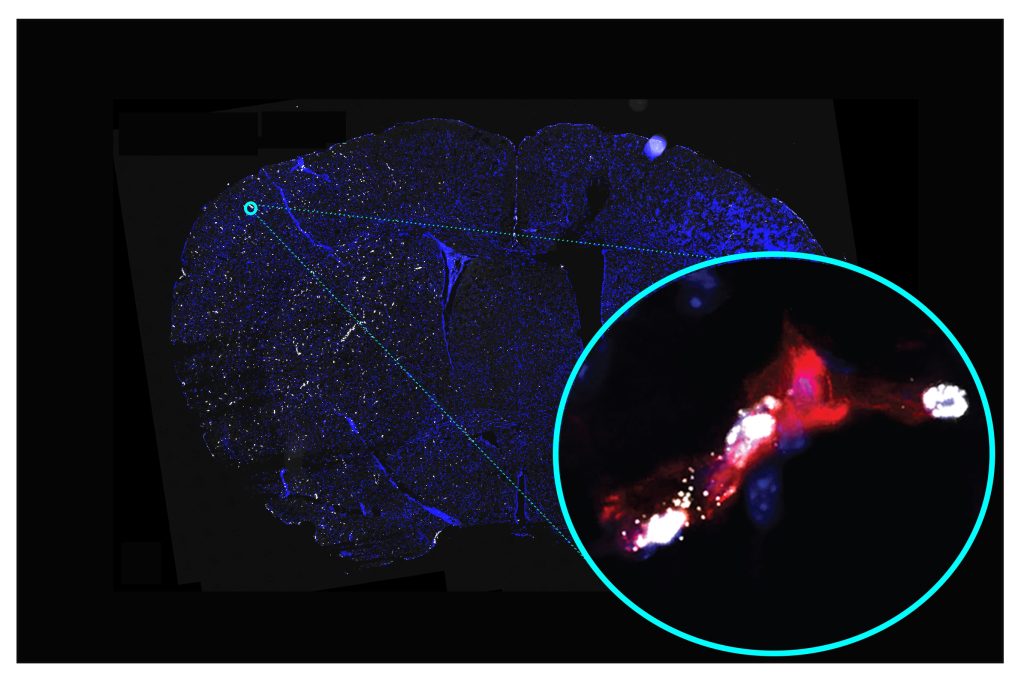Can Alzheimer’s be cured with a new genetic therapy?
There is presently no cure for Alzheimer’s disease, which is thought to be the root cause of dementia in 32 million individuals worldwide.
The majority of experts think that aberrant amyloid and tau protein buildups in the brain trigger alterations that lead to Alzheimer’s disease.

An experiment using a brand-new gene silencing treatment for Alzheimer’s disease that aims to reduce the body’s level of tau protein was carried out by a multidisciplinary team of researchers.
The most widely accepted explanation regarding the origins of Alzheimer’s disease is that it results from aberrant accumulations of the proteins amyloid and tau, which alter the brain. However, scientists are still unsure of the exact mechanism by which this disease develops.
Alzheimer’s disease, which is believed to afflict 32 million people worldwide, has no known cure, although doctors can treat its symptoms to enhance a patient’s quality of life.
A new gene silencing therapy for Alzheimer’s disease has now being tested by an international team of experts. The treatment turns off the tau protein-coding gene, which reduces the body’s production of the protein.
What impact does tau protein have on Alzheimer’s?
The core cells of the neurological system, called neurons, are where tau is most frequently found. Tau aids in maintaining the tube-like interior shape of nerve cells in a healthy brain.
Microtubules are structures that resemble tubes that aid in maintaining cell shape and guarantee that other proteins and chemicals move around the entire neuron with ease.
The tau protein in an Alzheimer’s patient’s brain separates from the microtubules and instead binds to other tau proteins inside the brain cell. As a result, the microtubules break down and aberrant tau protein accumulations occur.
These tau protein accumulations come together to form “tangles” within the brain cells. As a result, the neurons are unable to communicate with one another.
We spoke with Dr. David Merrill, an adult, and geriatric psychiatrist and the director of the Pacific Brain Health Centre at Providence Saint John’s Health Centre in Santa Monica, California, who was not involved in this study. “We know that tau tangles track with the progression of Alzheimer’s, meaning the worse that Alzheimer’s gets, the more tau tangles there are throughout more and more of the brain,” he said.
And ultimately, he continued, “those lead to neuron dysfunction and death.”
Blocking the gene that codes for tau
In this investigation, scientists developed a medication intended to silence the tau protein-encoding gene. The microtubule-associated protein tau (MAPT) gene is the one in question.
Antisense oligonucleotide BIIB080 is the name of the investigational medication. Small bits of RNA or DNA are used in this type of therapy to prevent a particular RNA from carrying out its intended function. In this instance, those are to act as guidelines for the creation of the tau protein.
Researchers included 46 patients with mild Alzheimer’s disease, with an average age of 66 years, in this phase 1 clinical research. The experiment was held between 2017 and 2020.
Throughout a 13-week treatment period, the trial compared four doses of the experimental medication injected into the nervous system through the spinal canal to a placebo.
Researchers discovered that 24 weeks after therapy, levels of both total tau and phosphorylated tau had decreased by more than 50% in trial participants in the treatment groups that had received the highest dose of the medication.
Over 90% of participants finished the post-treatment period, and 94% of those who received the drug and 75% of those who received a placebo reported mild or moderate side effects. The most frequent side effect of the experimental medication was headaches upon injection.
A ‘plausible’ therapy strategy
Dr. Merrill described this study’s ability to mute the expression of the gene that causes tau tangles in the brains of Alzheimer’s patients as “amazing” when asked about it.
Dr. David Merrill stated that this study “is the first step in demonstrating that this is a safe approach with a plausible biologic mechanism that can then be tested to see if it indeed does what we would expect, which is slow down the progression of Alzheimer’s disease and be a disease-modifying therapy that results in people’s cognition being better for longer.”
Non-participant in this study, Dr. Raphi Wald is a board-certified neuropsychologist at the Marcus Neuroscience Institute, established at Baptist Health South Florida’s Boca Raton Regional Hospital.
According to him, “a great deal of research is currently being conducted on preventing or destroying the abnormal proteins that appear on the brains of people with Alzheimer’s disease.”
“Compared to those without the disease, people with Alzheimer’s tend to have higher levels of the two proteins tau and amyloid in their brains. The majority of Alzheimer’s research has been devoted to preventing these diseases from spreading throughout the brain. This research suggests what might be a useful strategy for doing that,” he said.
The Alzheimer’s Association’s senior director of scientific programs and outreach, Dr. Claire Sexton, commented on this study.
While Alzheimer’s disease anti-amyloid therapies have gotten a lot of attention, the drug development landscape is much bigger, with a variety of targets and approaches being researched, she said. This is a positive report on phase 1 research that targets tau, one of the main indicators of Alzheimer’s disease, using a gene silencing strategy.
What comes next?
Dr. Wald stated that when it comes to the next steps in this research, the most crucial factor with these treatments is how they impact the daily lives of those at risk for or dealing with Alzheimer’s disease.
“Reducing tau is not a guarantee that people will not go on to have worsening cognitive functioning,” he advised. According to Dr. Merrill, the next logical step would be a phase 2 experiment to assess side effect tolerance and safety.
He continued, “And then the actual phase 3 trial would be to really look at treatment efficacy.” “Does memory get better? Does Alzheimer’s patients’ memory deterioration slow down over time? I’d want to see this medication investigated in later-stage clinical trials to determine whether it improves or maintains memory function in Alzheimer’s.
Dr. Sexton emphasized that more research with varied populations will be required to adequately assess the safety, target engagement, and clinical effect in all populations because the study’s subjects were all white.
“However, given the role of tau in not only Alzheimer’s but other dementias — known as tauopathies these results are a significant development and a further cause for optimism in the field,” she continued.
“The therapeutic study aimed against tau is funded by the Alzheimer’s Association Part the Cloud research grant programme, including a project by Dr. Ross Paterson at University College London. According to Dr. Sexton, the subject of his research is a unique substance that is intended to lessen tau formation in Alzheimer’s patients that is associated to dementia.
REFERENCES:
- https://www.medicalnewstoday.com/articles/could-a-new-genetic-therapy-help-reverse-alzheimers
- https://www.healthline.com/health/alzheimers/reverse-alzheimers
- https://www.dementia.org.au/about-us/news-and-stories/research/could-gene-therapy-reverse-dementia
For Alzheimer’s disease medications that have been suggested by doctors worldwide are available here https://mygenericpharmacy.com/index.php?therapy=31








